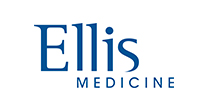News
January 14, 2016Study: Health Care Providers in New York Expand Patient Access through Telehealth Services
In a new report, the Center for Health Workforce Studies (CHWS) at the University at Albany has found that more than half of federally qualified health centers and hospitals in the state of New York utilize telehealth services. Telehealth is an important tool used to link patients to primary care or specialty health care services, thus increasing access to services for New York residents.
In “An Exploratory Study of the Use of Telehealth Services by Federally Qualified Health Centers and Hospitals in New York State,” CHWS summarizes findings from a survey of the state’s health care providers on their use of telehealth services.
Telehealth is defined as the use of electronic information and telecommunications technologies to support long-distance clinical health care, patient and professional health-related education, public health, and health administration. In many areas of New York State that have a limited supply of health care providers, telehealth is another tool to increase access to services.
Recent federal and state health care reforms have resulted in a growing demand for health services, and increasingly, health care providers are considering innovative treatment modalities, including telehealth.
Other important findings from this report include:
- The vast majority of providers reported using telehealth services for clinical functions such as diagnosis and disease management.
- The most frequently cited reasons for starting or increasing the use of telehealth services were expanding access to health care and preventing the deterioration of medical conditions.
“Efforts to expand access to care, particularly in underserved communities, is increasing interest in and use of telehealth services,” said Robert Martiniano, MD, the CHWS senior program manager who led the study. “It is important to better understand the telehealth applications that providers are using and their impacts, as well as the barriers and facilitators of their use.”
The full report can be found on the CHWS website.
























